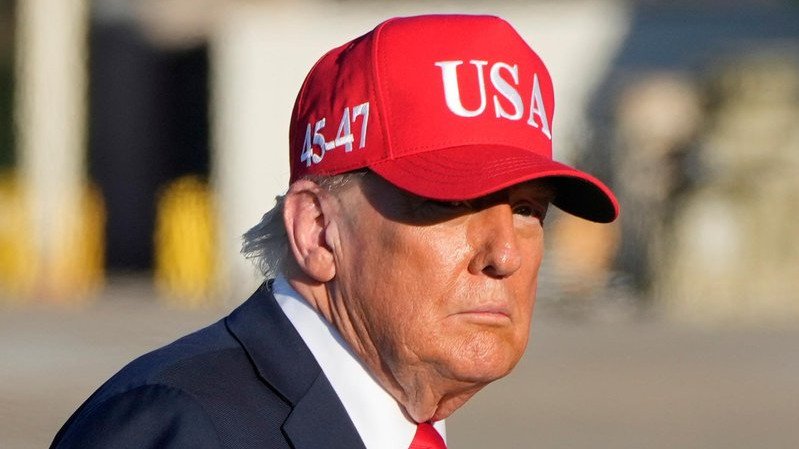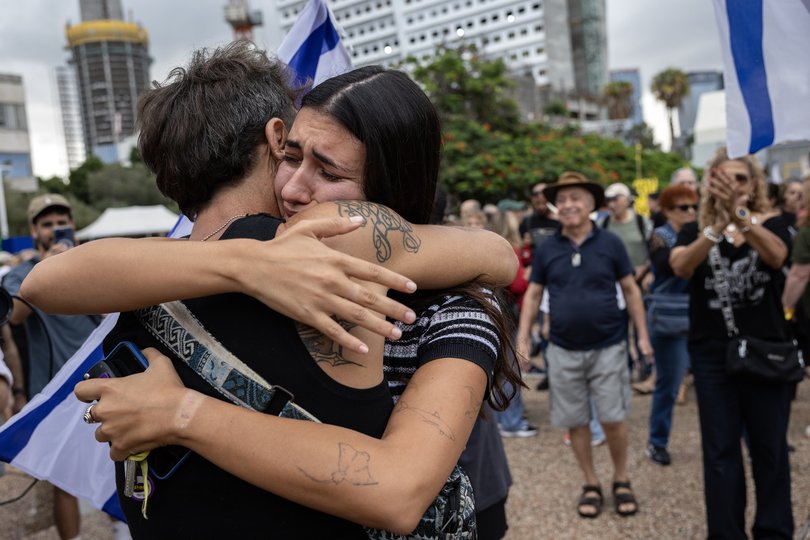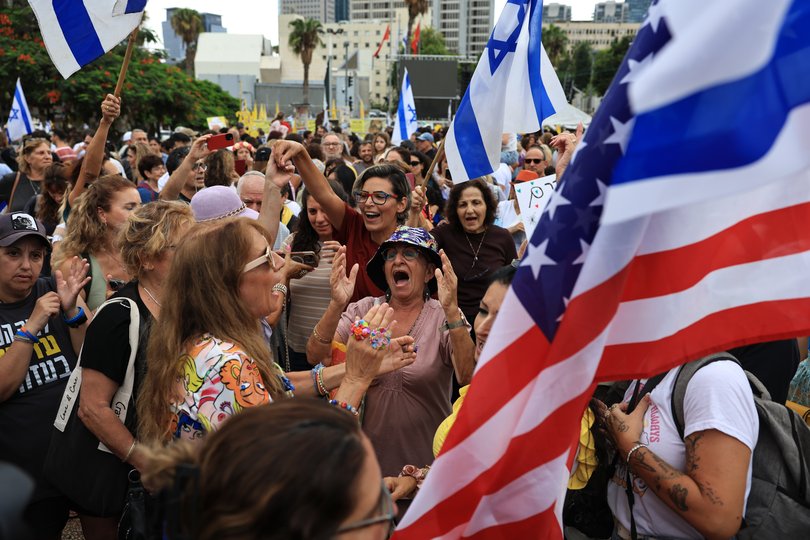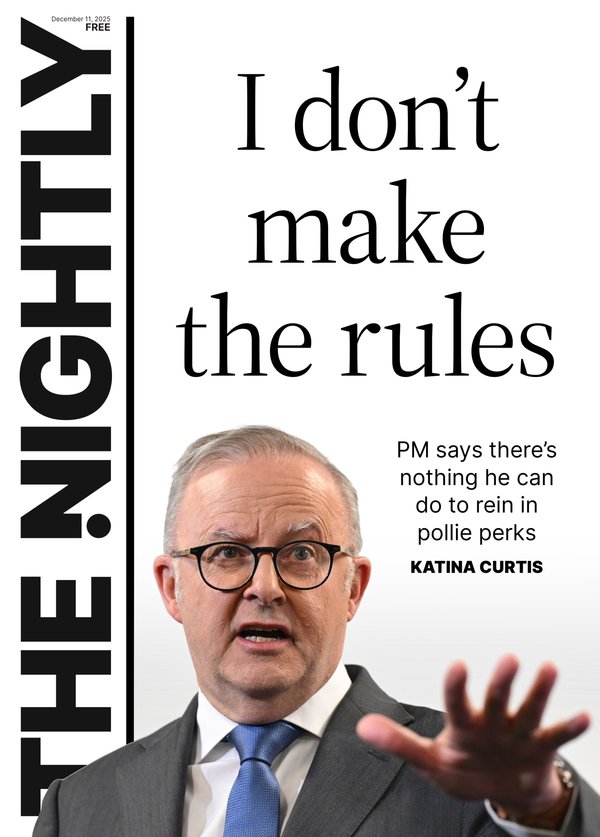THE ECONOMIST: Donald Trump brokers historic Middle East deal, offers Gaza a ‘new beginning’

Plenty of American presidents have sought a breakthrough in the bitter conflict between Israel and the Palestinians.
Now, two years after the atrocities of October 7 and after endless rounds of killing in Gaza, Donald Trump has joined the tiny list of those who have succeeded.
The tentative agreement between Israel and Hamas to stop the shooting and release the hostages opens up a new vision for the Middle East. The path is narrow, but it is the best chance of creating lasting peace since the Oslo Accords in 1993 and 1995.
Sign up to The Nightly's newsletters.
Get the first look at the digital newspaper, curated daily stories and breaking headlines delivered to your inbox.
By continuing you agree to our Terms and Privacy Policy.This new vision is radically different from the moribund approach under Oslo. It offers a shift from endless, abstract negotiations over maps and the hypothetical constitutional arrangements of two states.
Instead, it promises a practical approach in which, as Gaza is governed and rebuilt, rid of the terrorists who once dominated it, Israelis and Palestinians come to believe that they have more to gain from coexisting than from destroying each other.

Success looks less like a ceremony in the White House and more like a decade of cement mixers spinning in Gaza, as violent settlers in the West Bank are curbed, the threat of missiles fades, and ordinary people embrace a slowly rising belief in a safer, more prosperous future.
The peace deal is a triumph for Mr Trump’s transactional, bullying style of diplomacy. It came after both sides were holed up in Sharm el-Sheikh, in Egypt, with negotiators from America, Egypt, Qatar and Turkey available to apply pressure.
The details are not yet public, but Hamas is due to release the 20 Israeli hostages who are still alive, alongside a parallel release of Palestinian prisoners by Israel, a flood of aid and a partial pullback by the Israeli army from Gaza’s main cities, to what Mr Trump called “an agreed-upon line”. In Israel and what remains of Gaza, there was euphoria. Mr Trump may fly to the region to mark the deal.
Under Mr Trump’s 20-point plan, the next phase would create a technocratic government that rebuilds Gaza while excluding Hamas from power. Hamas would be disarmed, and security would be provided by an international force.
Mr Trump would chair an oversight board until Palestinians took responsibility, possibly under a reformed Palestinian Authority. The grander, ultimate objective is what Mr Trump calls “everlasting peace” between Israel and all of the Palestinian territories.
Of course, the obstacles to further progress are immense — how could they not be? Negotiators on both sides still have to iron out their differences over, say, Hamas’s disarmament. They could sign up, while cynically intending to sabotage progress later.
With an estimated 78 per cent of Gaza’s buildings damaged and little industry left, reconstruction could become bogged down. Most importantly, ordinary Israelis and Palestinians have lost faith in the possibility of peace.
Thirty years on from Oslo, and after the trauma of October 7th, most Israeli Jews see the Palestinian territories as a failed quasi-state with a record of corruption, terrorism and Jew-hatred.
In 2012, 61 per cent of Israelis supported two states. Now perhaps a quarter do and many display a chilling indifference to the loss of Palestinian life. For their part, Palestinians see Israel as a rogue state committed to occupying their land and routinely unleashing violence.
Polled in May, 50 per cent of them supported the October 7th attacks, 87 per cent denied that Hamas had committed atrocities and 41 per cent supported armed resistance.
And yet there are grounds for hope. The end of the war could trigger a change of leadership on both sides, with the remnants of Hamas being persuaded or forced to relinquish any formal role in Gaza’s government. Israel must hold an election within 12 months which polls suggest could result in the prime minister, Binyamin Netanyahu, leaving office and the end of his coalition with extremist hard-right parties.
Abroad, the prospects have improved, too. Around the world, the public focus is on peace after years of looking away. In Mr Trump, America has a president who is unafraid to push Israel hard. The humbling of Iran’s regime and its violent proxies has greatly reduced its threat to the region.

The willingness of the Gulf Arab states not only to pay for Gaza’s reconstruction, but also to underwrite a peace process and, potentially, help provide security, is a big step forward.
That is just as well, because outsiders will have to restrain destructive impulses on both sides. Having pressed Israel to end the war on Iran, rebuked it for striking Qatar and pushed it into a hostage deal, Mr Trump must strive to get Mr Netanyahu or his successor to curb the expansion of Jewish settlements.
He must bolster Palestinian institutions by stopping Israel from depriving them of customs revenue and from facilitating vigilante violence by settlers and soldiers. The Arab states must use all their influence to insist the Palestinians reject violence and to get the Palestinian Authority to reform and help it find new leaders.
They must also sell a broader vision. For Israelis, this is the prospect of a new regional security order that makes them safer by deepening co-operation with Arab states, building on the Abraham Accords struck in 2020.
This could also forge new links with Syria, and perhaps Lebanon, both of which have escaped Iran’s malign grip. For Palestinians, it is the prospect of reconstruction at home and new economic links with the Gulf creating a path to trade and jobs.
Gaza is the key. Palestinians everywhere will want to see if Israel can commit itself to allowing a technocratic government in the strip to emerge with international backing.
For their part, Israelis will be watching whether the Palestinians in Gaza can govern themselves better, dismantling terrorist infrastructure and reforming the institutions Hamas captured.
Nobody should imagine any of this will be easy. The qualities that enabled Mr Trump to get a ceasefire — his willingness to bully, escalate and create a burning sense of urgency — are different from the sustained commitment over many years that will be required in his role as chair of the reconstruction authority.
Nonetheless, in a region that has known little other than decades of conflict, this is an extraordinary moment: a slender but real chance at a new beginning.
Originally published as A new beginning for the Middle East
